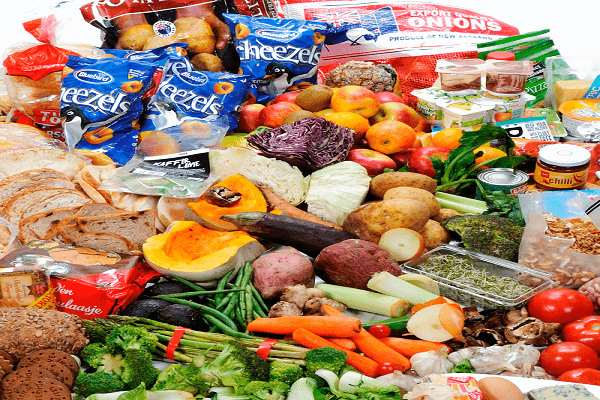Approximately 1.3 billion tonnes or one-third of the food produced in the world for human consumption gets wasted every year, amounting to a loss of roughly $680 billion in industrialized countries. More than 40% of this waste and loss occurs at the retail and consumer level.
There are a multitude of ways to tackle this problem. On analyzing where food wastage occurs at the retail level, one of the factors that comes up is overstocking. Overstocking generally occurs as a result of inaccurate demand forecasting resulting in the accumulation of unused stocks. Under the aegis of the Industry 4.0 movement, we are seeing a revolution in big data and analytics as more and more brands and manufacturers are employing IoT powered demand sensing technology to better anticipate demand and streamline production and supply chains. But what if we take this one step further?
The Industry 4.0 espouses a connected and automated ecosystem which was first undertaken in the manufacturing sector. Going by the term Industrial Internet of Things (IIoT), it involves incorporating sensors and AI into the physical assets on the manufacturing floor, collecting, storing and transmitting a wide range of data. Level sensors are being used for management of liquid asset inventories, the working condition of a machine being monitored with sensors analyzing its temperature and vibrations as well as sensors instantly tracking and alerting to a breakdown or malfunction. Sensor technology has reshaped industrial manufacturing by creating seamless and automated intelligent systems.
However, applications of IoT and sensor technology need not be bound to the confines of the manufacturing sector. For the Retail sector and CPG industry, IoT suggests possibilities beyond just an enriched shopping experience at a brick and mortar store. IoT powered technology possesses enormous potential to solve inventory management issues, especially overstocking and waste reduction.
Currently, a lot of brands are using predictive analytics on the basis of demand sensing which involves collecting and combining data from multiple sources in real time throughout the supply chain to better assess the demand for certain products. Smart shelves equipped with sensors to detect the addition and removal of items placed on them are also gaining momentum with retailers to monitor and update their inventory in real time. These smart shelves are also capable of recognizing cases of low stock and alerting management, thus freeing up store employees to engage with customers.
But what if the data collection does not stop at the shelf? What if brands could have access to real time data on the consumption habits of its consumers?
A crossover of level sensors from industrial plants to food packaging could provide a solution for this purpose where smart food packaging can play a major role in providing the interface to gather more information of such nature. A liquid level sensor implanted into the packaging of a juice bottle could detect when the bottle is empty and store that information against a digital twin or instance of the bottle stored online. The particular brand can access all this information in real time through the digital twin. Data of this nature opens up new perspectives into understanding consumer behaviour and consumption patterns. It can then be used to more accurately predict demand and pinpoint locations where this demand will occur. Having a clearer picture of when a particular product will be in demand, manufacturers will be able to better plan production cycles as well as manage distribution channels. Stores will be able to have the right product, in the right amount, at the right time, avoiding overstocking and thereby reducing wastage due to spoilage.
However, the main barrier to adopting connected products on such a large magnitude is the lack of cheap and small sensors in the market. For an operation of this nature to be successful, we would require sensors that could be embedded into packaging without altering or affecting the properties and appearance of the product in any manner. These sensors would also need to be very affordable to be mass produced for millions of everyday consumer products.
Nonetheless, current research in sensor development looks promising. RVmagnetics has already come up with what they claim to be the world’s smallest sensor. Based on microwire technology and magnetic fields, the thin as hair sensor is capable of sending accurate and real time data regarding physical quantities like temperature, pressure, torsion, position etc. Even though these sensors have been developed for the industrial sector, it is an encouraging start towards the idea of adapting IIoT sensor technology for the retail atmosphere.
Technology bolstered by the IoT platform can not only improve business practices, but positively impact the lives of everyday people, reduction of food wastage being a part of it. Within the broader context of the Industry 4.0, sensor driven technology is just part of the journey towards the digital transformation of the physical world, but a part that holds limitless potential and scope for waste reduction and streamlining demand-supply chains in the retail sector. But it is the manufacturing sector where the ideals of the Industry 4.0 have flourished the most. Retailers could take a leaf out of their book and bring sensors used in factories into the brick and mortar stores for smarter inventory management solutions. For this to become a reality, we need to see a bigger shift in existing beliefs and ideology in order to prioritize research into industrial level sensors that can be applied to the packaging on food products sitting on the shelves in retail stores.

Recent Comments